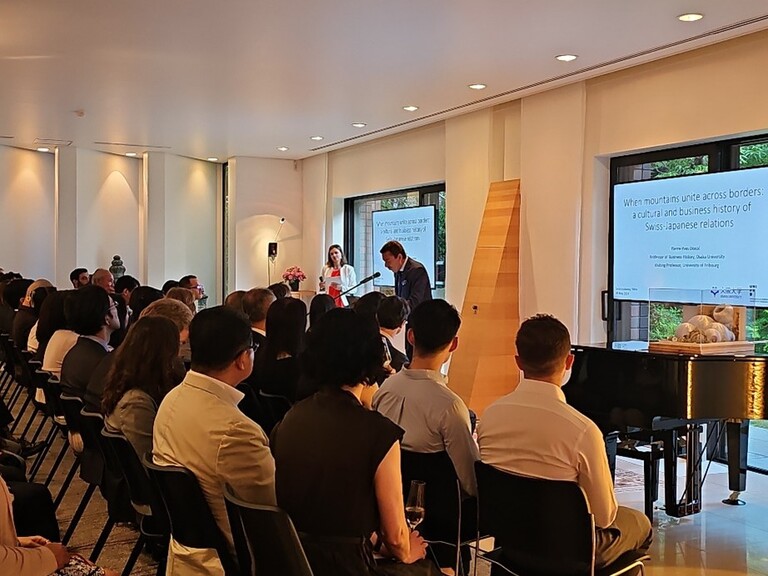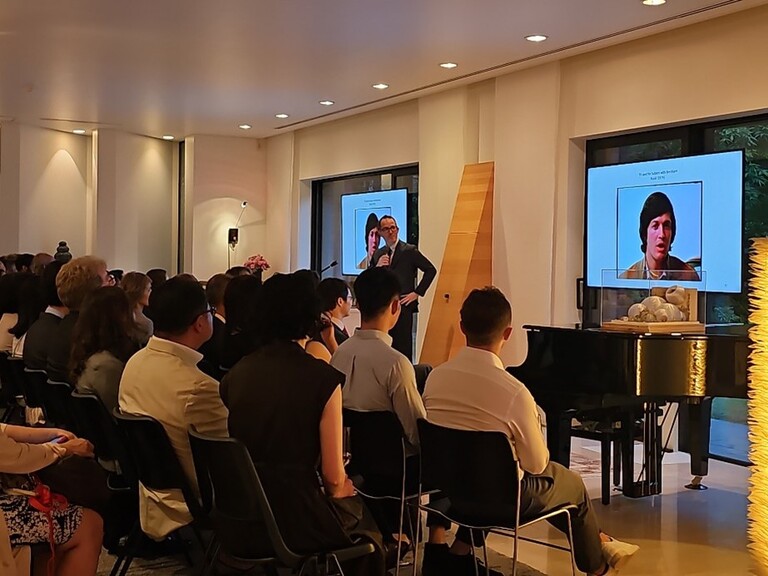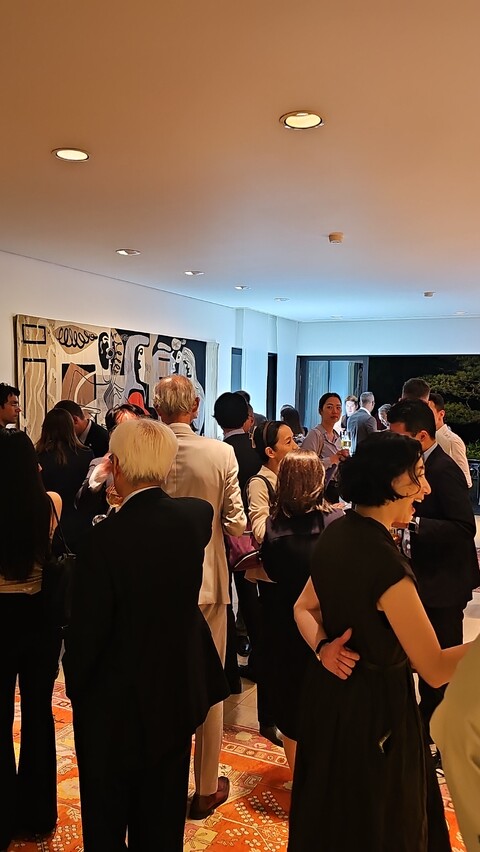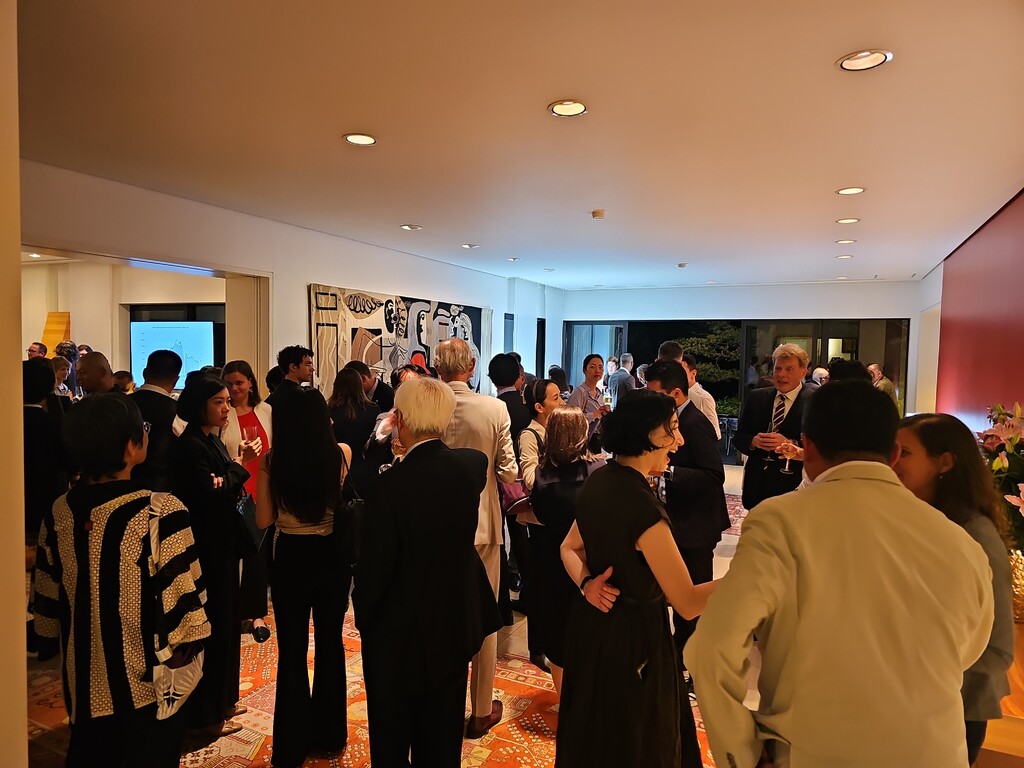Over 70 people joined us on Wednesday, May 29, 2024, for an insightful lecture on the history of the bilateral relations between Switzerland and Japan by Professor Pierre-Yves Donzé, hosted by the Swiss Ambassador Dr. Andreas Baum.

On Wednesday, May 29, 2024, a lecture on the history of bilateral relations between Switzerland and Japan was held at the Swiss Ambassador’s residence to the delight of more than 70 participants.
The event focused on the history of relations between Switzerland and Japan through the lens of a key feature of both countries - the mountains. Ambassador Andreas Baum welcomed the guests to this lecture on the occasion of the 160-year anniversary of diplomatic ties between Switzerland and Japan.

Under the title “When mountains unite across borders: a cultural and business history of Swiss-Japanese relations”, Pierre-Yves Donzé, Professor of Economic History at the University of Osaka, took us on a journey through mutual touristic exchanges since 1864.
Until 1945, mountaineering was at the heart of the relationship, with climbers from both countries working together to conquer peaks. As in Switzerland, modern alpinism in Japan has been imported by British mountaineers, as evidenced by the founding of the Japanese Alpine Club inspired by the English Alpine Club in 1905. This sparked the interest of a Japanese elite in conquering the peaks of the Swiss Alps. One of the earliest Japanese contacts with the Swiss Alps was a visit by the Iwakura Mission (1873), a Japanese diplomatic voyage to the United States and Europe between 1871 and 1873 by leading statesmen and scholars of the Meiji period, attracted by Switzerland’s image as industrious, simple and stable country in the center of Europe. This was followed by many Japanese mountaineering pioneers in the Alps, most famously Yuko Maki (1894-1989), who was the first to climb the Eiger via the Mittellegigrat (Northeast Ridge) in 1921, together with three Swiss mountain guides, or Isamu Tatsuno, who in 1969 became the world’s youngest man (21 years old) to climb the Eiger North Face. Even the Imperial House was drawn to the Swiss mountains, with Prince Chichibu climbing the Matterhorn in 1926, Prince Akihito visiting the summit of the Jungfrau in 1953, and Emperor Hirohito traveling to Switzerland in 1971, as part of the first trip ever made by a reigning Japanese Emperor abroad.
After the Second World War, the relationship diversified. In 1957, Swissair launched its Zurich-Tokyo flight, spurred by the desire to increase economic, diplomatic, cultural and tourist exchanges between the two countries. Numerous Swiss companies and organizations came to Japan and vice versa, and sister cities and joint ventures were established to deepen economic and cultural ties. In 1990 a Swiss Alpine Museum in the Crédit Suisse tower in Akasaka opened. Meanwhile, there was an increase of Japanese sightseeing tourists drawn to Switzerland by its landscapes and cultural symbols such as Heidi, while world events such as the Japan World Exposition in Osaka (1970) and the Winter Olympics in Sapporo (1972) brought more and more Swiss tourists to Japan. The Alps and nature still characterize the image of Switzerland in Japan today, while business and innovation have become the focus of the relations. This is evidenced by the upcoming World Expo in Osaka in 2025, where Switzerland will be present with a Pavilion dedicated to positioning Switzerland as an efficient, leading innovation hub.

The lecture shed a light on the rich business and cultural relations that are deeper than many guests may have expected. The discussion continued through the subsequent Q&A session and the buffet reception.

